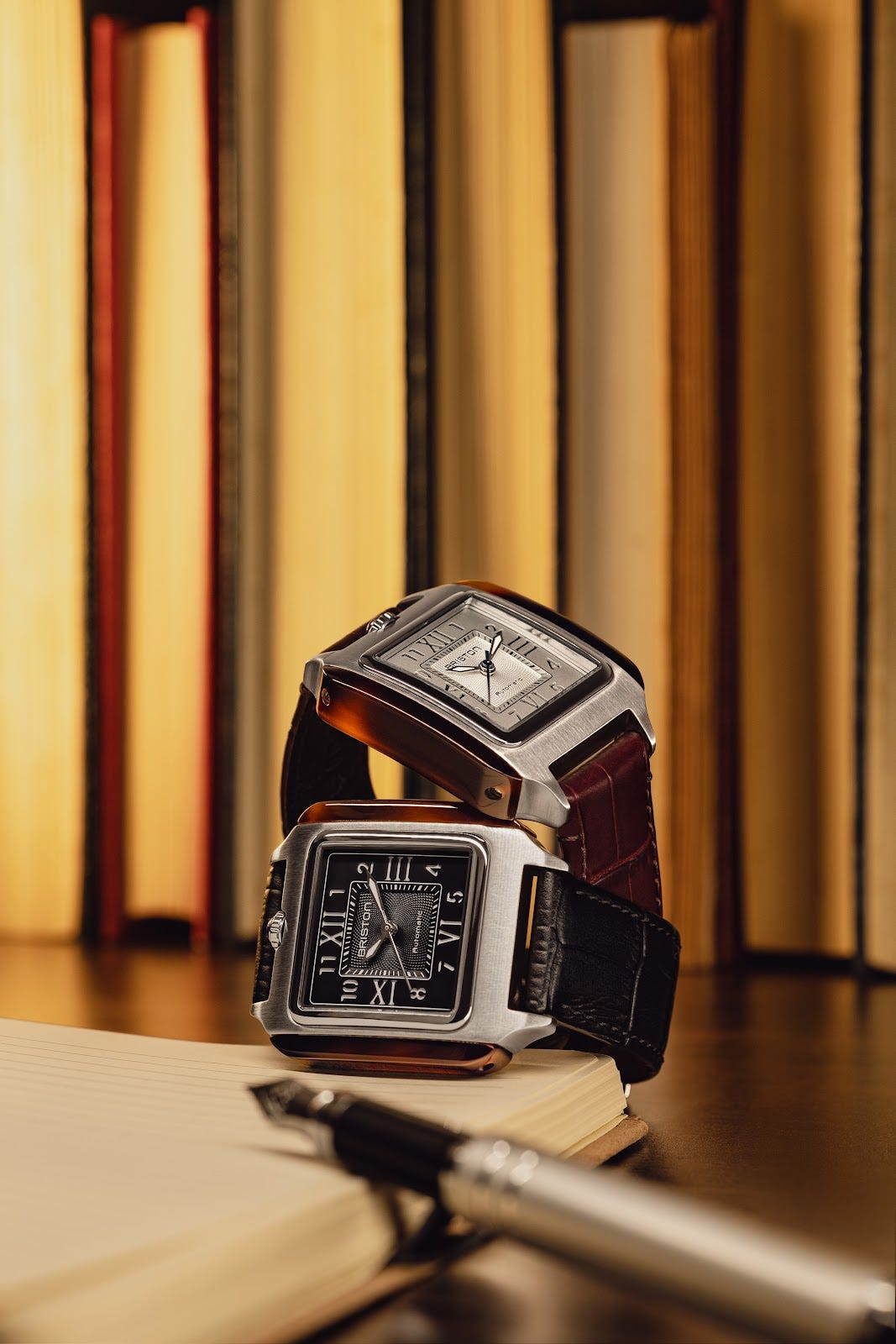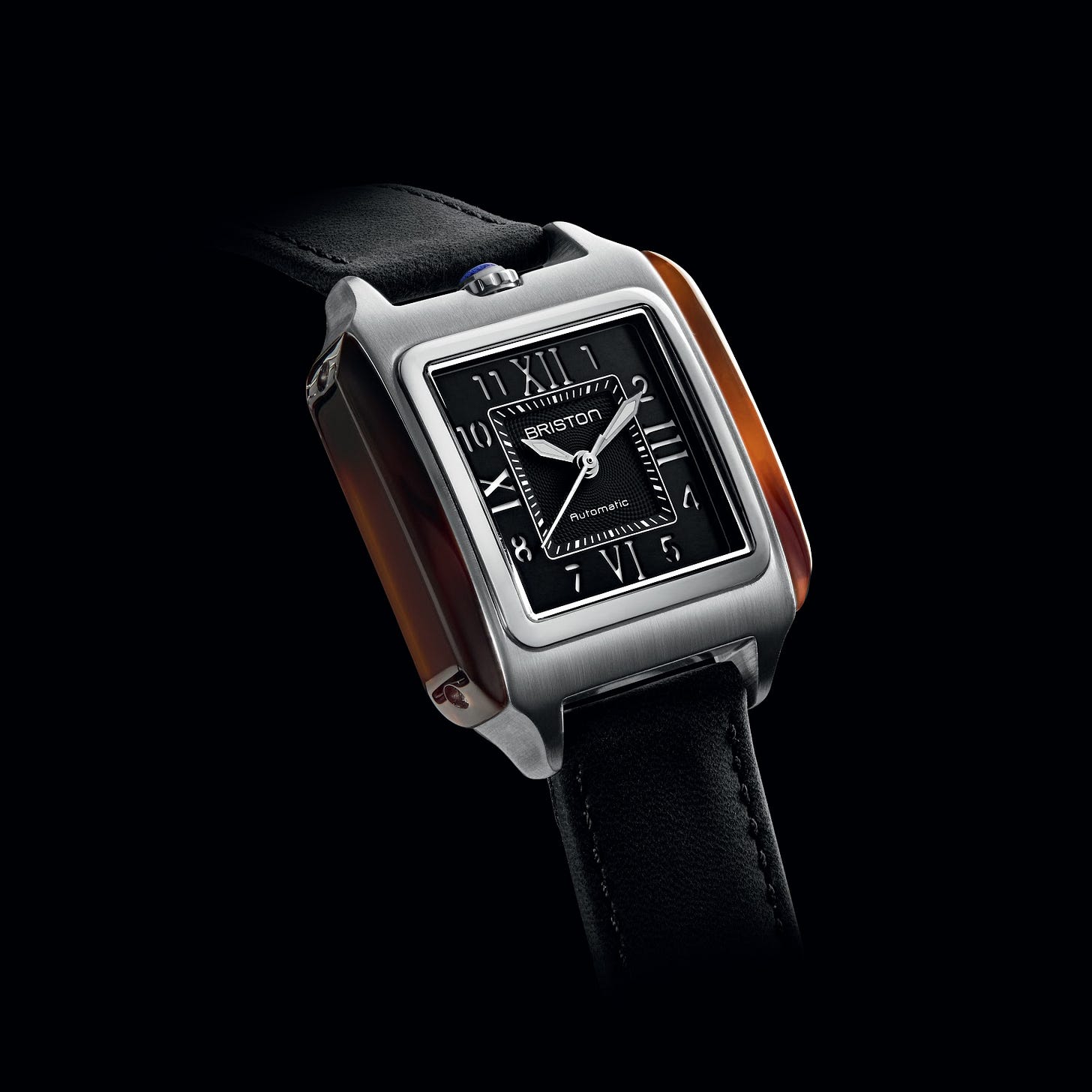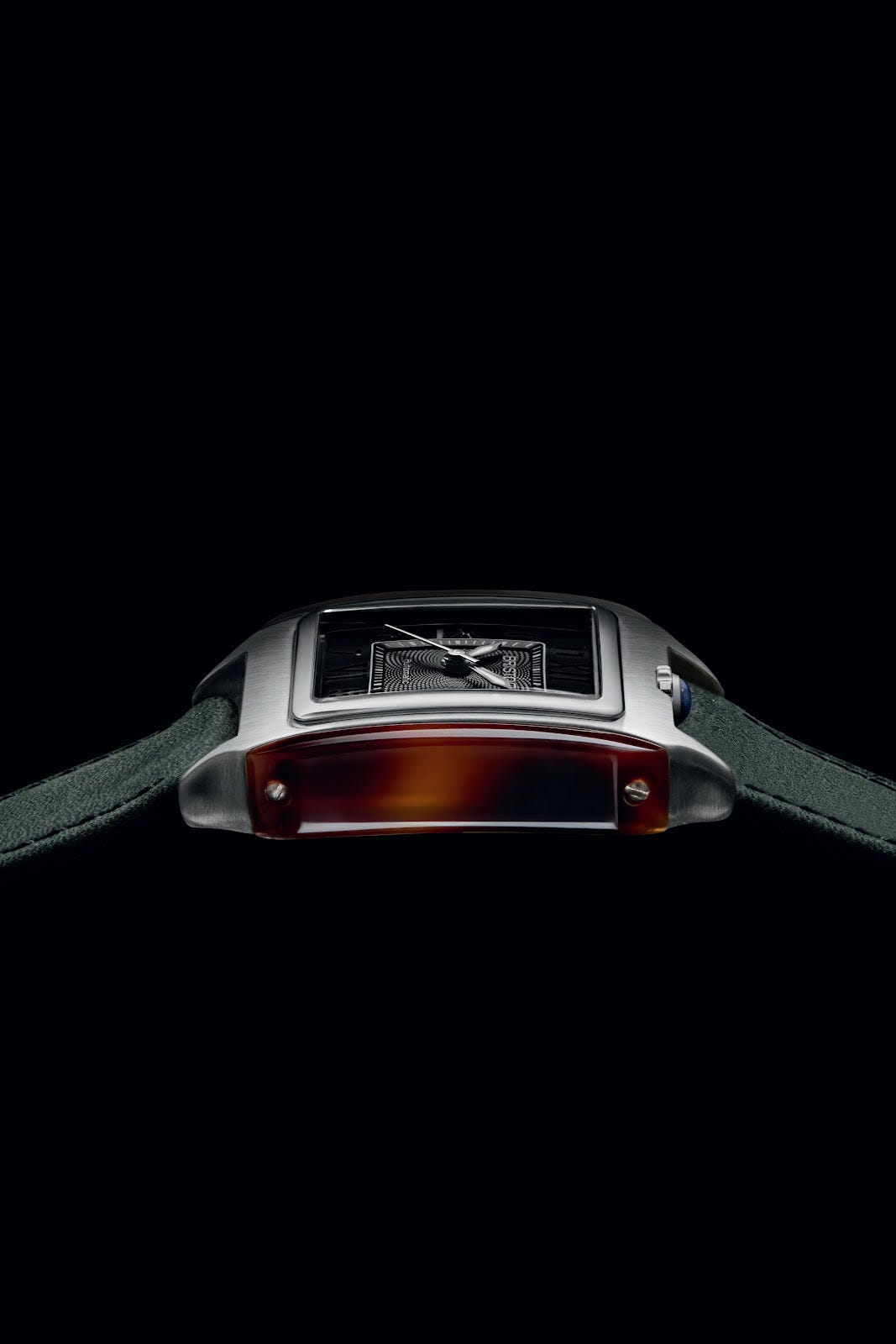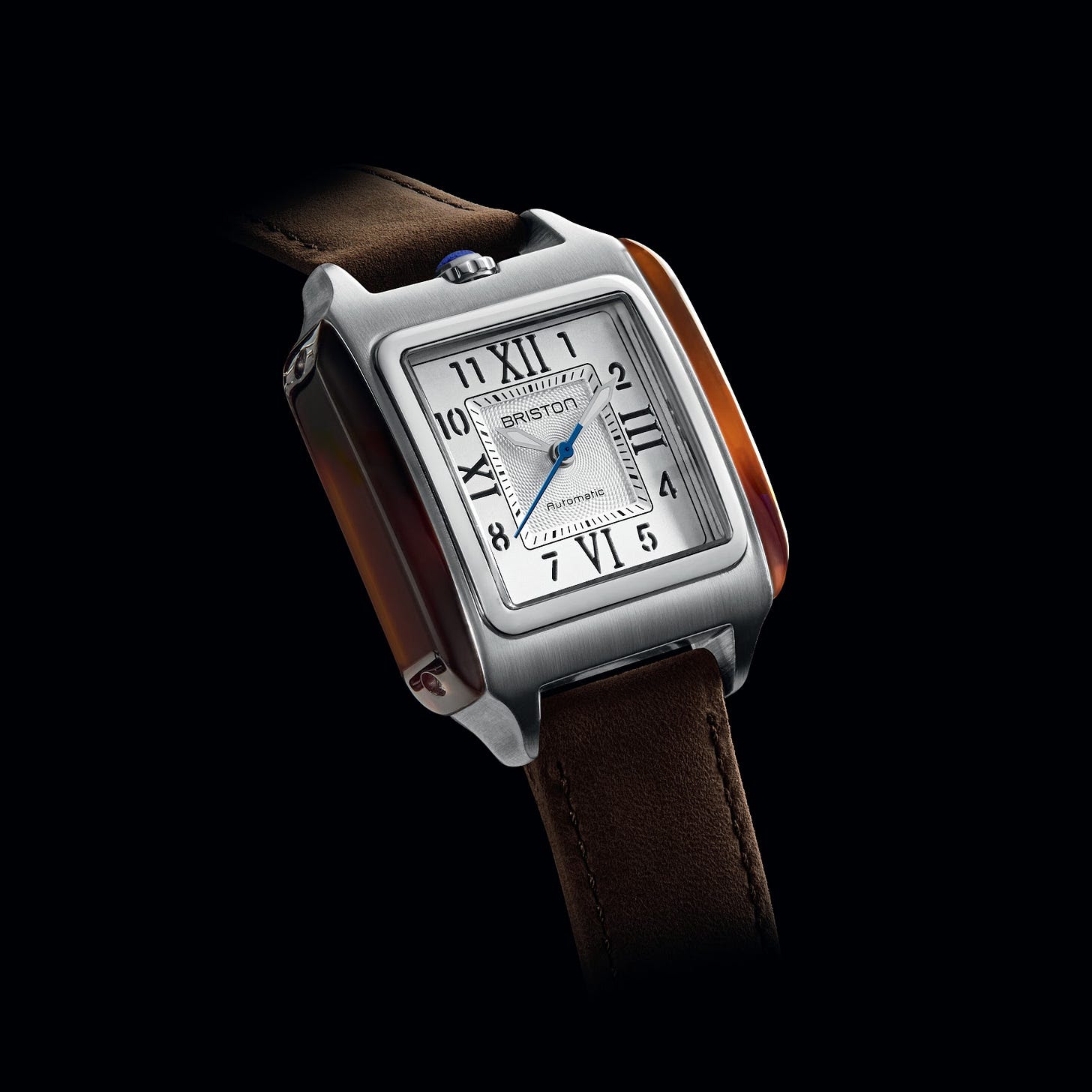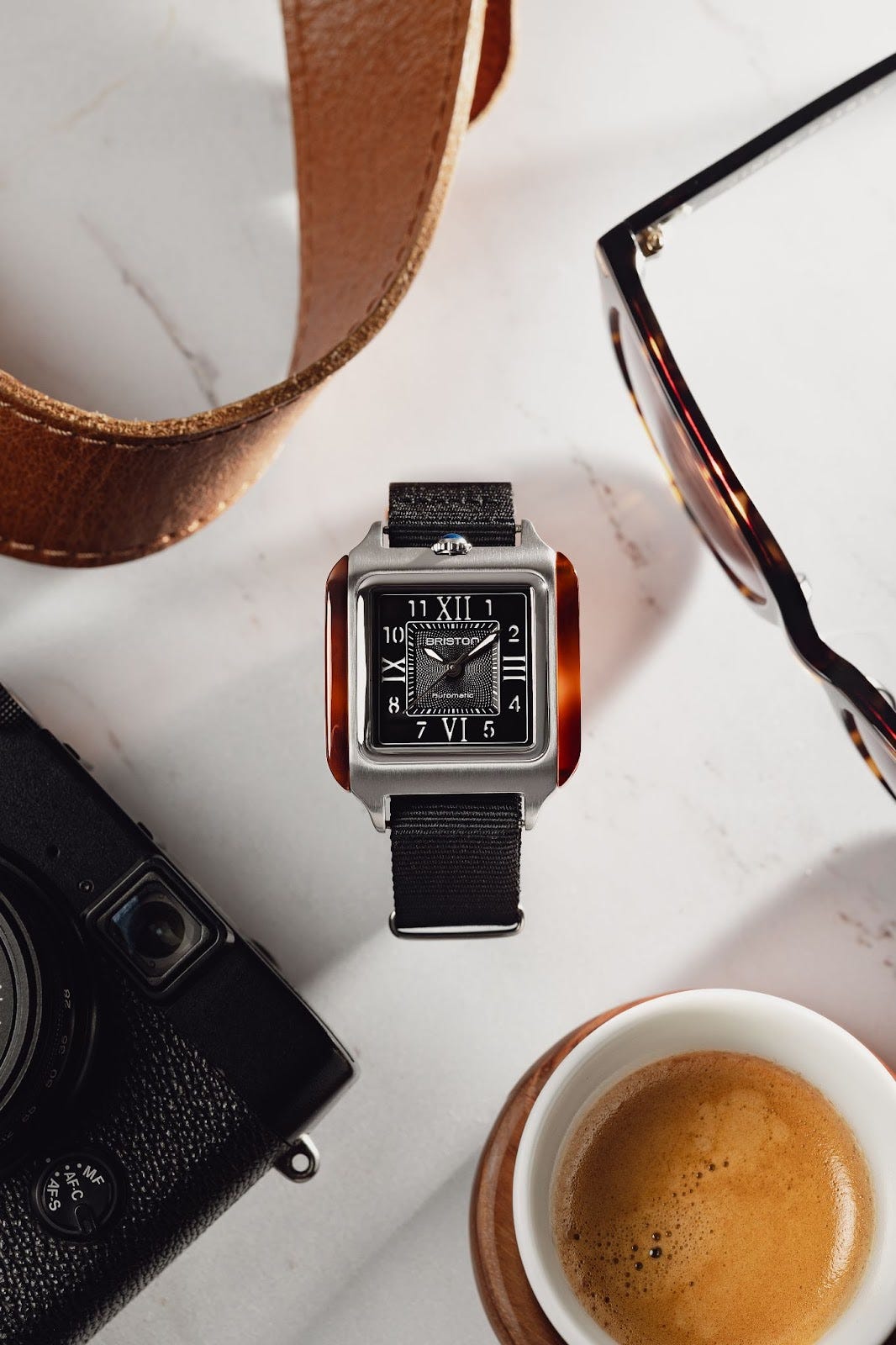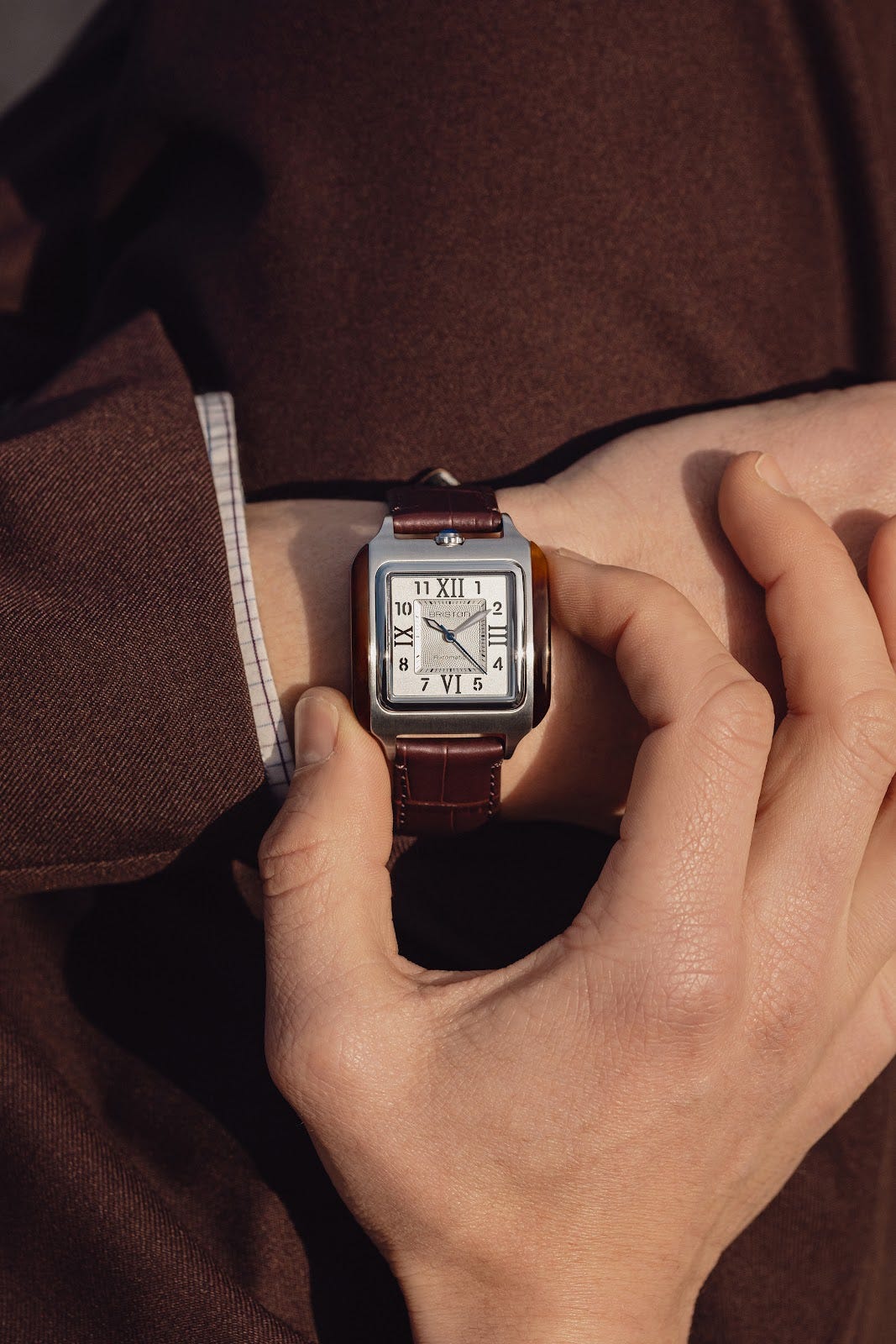Briston Kennedy Streamline Automatic Review: Art Deco Watch with Miyota Movement
Complete review of the Briston Kennedy Streamline Automatic - a $920 Art Deco-inspired mechanical watch with Miyota 9039 movement and distinctive tortoiseshell acetate case.
The contemporary watch landscape resembles a crowded party where everyone's shouting to be heard. Between heritage revivals, limited editions, and collaborations, watch enthusiasts face a paradoxical abundance---too many choices resulting in collective fatigue. In this saturated environment, Briston has occupied a specific niche: the colorful outsider with its signature acetate cases and preppy NATO straps, the kind of watch that signals casual affluence without the gravitas of traditional watchmaking.
With its new Kennedy Streamline Automatic, Briston attempts something more ambitious. The brand is shedding its casual campus credentials and knocking on the door of horological respectability. This square-cased, automatic watch with its Art Deco inspirations raises a central tension: can a brand born of lifestyle branding successfully pivot into the realm of mechanical credibility without losing its identity in the process?
Design and Case Construction
To understand this evolution, one must first examine the object itself. The Kennedy Streamline Automatic presents itself as a study in restraint---at least by Briston standards. Its 36mm square case blends polished stainless steel with the brand's signature tortoiseshell acetate flanks, creating a visual tension between traditional luxury and material innovation. The crown, positioned at 12 o'clock and adorned with a lapis lazuli cabochon, signals a decisive departure from conventional crown placement at 3 o'clock---a nod to Art Deco symmetry that underscores the collection's architectural ambitions.
The dial architecture speaks volumes about Briston's evolving design language. Available in black or silver-white, the double-layered construction features hollowed Roman and Arabic numerals that create depth and shadow. The guilloché decoration in the central zone is not merely decorative flourish; it is a deliberate signal to the traditional watchmaking world that Briston understands the visual codes of horology. The "Streamline" designation itself references the American design movement of the 1930s---an aesthetic philosophy that emphasized aerodynamic forms, smooth curves, and horizontal lines to suggest speed and modernity, born from both Art Deco influences and the industrial optimism of the pre-war era. The dauphine-shaped hands---particularly the blue steel seconds hand on the white dial version---evoke classical watchmaking. These design choices telegraph a message: we are no longer just making fashionable timepieces; we are making mechanical watches worthy of horological consideration.
Movement and Technical Specifications
Most significantly, beneath the display caseback beats a Miyota 9039 automatic movement. This ultra-thin Japanese caliber, while not Swiss, represents a meaningful upgrade in Briston's mechanical ambitions with its 24 jewels, 42-hour power reserve, and 28,800 vph frequency. The movement choice reveals Briston's strategy---to enter the automatic watch market with honest $920 pricing while maintaining the branded DNA that made it successful.
Briston Kennedy Streamline Automatic Specifications:
Case Size: 36mm square
Movement: Miyota 9039 automatic movement
Jewels: 24
Power Reserve: 42 hours
Frequency: 28,800 vph
Case Material: Stainless steel with tortoiseshell acetate accents
Crown: 12 o'clock position with lapis lazuli cabochon
Dial Options: Black or silver-white with guilloché center
Hands: Dauphine-shaped with blue steel seconds hand (white dial)
Price: $920 USD
Brand Evolution and Market Positioning
This mechanical pivot represents a dramatic departure from Briston's established identity. Since its founding by Brice Jaunet in 2013, Briston established itself through distinctive use of cellulose acetate---a material more commonly found in eyewear than watchmaking. This material choice, paired with NATO straps and cushion-shaped cases, created a recognizable aesthetic that appealed to fashion-conscious consumers seeking accessible luxury with a dash of preppy flair.
For over a decade, Briston's catalog has been dominated by quartz movements, positioning their products as style accessories first and timepieces second. The brand built a following among younger consumers who valued design over mechanical pedigree, creating a community around what might be called "Instagram watchmaking"---photogenic, affordable, and unburdened by traditional horological values.
The Kennedy Streamline Automatic, with its Miyota 9039 automatic movement and more formal design language, represents a significant evolutionary leap. Rather than a complete reinvention, it seems to be an attempt to grow up alongside Briston's original customer base, who may now have matured in both taste and purchasing power. The square case shape---entirely new for the brand---simultaneously signals both a break with the past and a commitment to distinctive design.
But this pivot raises fundamental questions about brand continuity. Does the Kennedy Streamline represent growth or confusion? The automatic watch balances precariously between these interpretations. The retention of acetate elements and the distinctive lapis lazuli crown maintain visual links to Briston's past, while the more sophisticated dial work and Miyota 9039 movement push toward a new identity. For consumers, this creates either an intriguing tension or a case of muddled positioning.
Briston's evolution occurs within a broader transformation of the watch marketplace. The brand's mechanical move comes amid a broader shift where microbrands have democratized automatic watchmaking. Competitors like Baltic, Lorier, and Studio Underd0g have successfully carved niches by offering mechanical movements at accessible price points, often wrapped in nostalgic designs that reference mid-century aesthetics.
The Kennedy Streamline's Art Deco inspiration is not merely aesthetic---it is culturally significant. In uncertain economic times, retro styling offers comfort, a sense of control, and a coded form of luxury that appears more tasteful than conspicuous consumption. The collection's name itself, evoking JFK's Ivy League polish and "casual yet formal" style, connects to a romanticized past that feels more stable than our precarious present.
This nostalgia operates within what might be called the "performance of taste" in contemporary watch culture. Automatic watches have become less about telling time and more about telling others who we are---or who we aspire to be. The Kennedy Streamline positions itself as a signifier of cultured taste without the prohibitive investment of established luxury brands, allowing wearers to signal a certain discernment without breaking the bank.
By adopting the square case and Art Deco aesthetic, Briston also subtly references iconic square watches like the Cartier Santos and TAG Heuer Monaco, inserting itself into a visual conversation with much more expensive timepieces. This is a shrewd move that allows consumers to perform adjacency to luxury without its financial burden.
Market Context and Cultural Significance
Evaluating the Kennedy Streamline Automatic's success requires understanding what it offers to the discerning buyer. The automatic watch's appeal lies in its confident contradictions: clarity of design that refuses microbrand overcomplication, wearable 36mm sizing that shows restraint when others chase wrist real estate, and honest $920 pricing that positions it in that sweet spot where you're not overpaying for Swiss marketing mythology but still acquiring something genuinely distinctive.
The collection's supposed weaknesses reveal themselves as carefully calculated choices for those who appreciate subtlety. The Art Deco influence reads as curated sophistication rather than desperate appropriation---familiar enough to signal cultural literacy, distinctive enough to separate the wearer from mainstream luxury conformity. The borrowed nostalgia becomes a strength for those confident enough to wear references without needing to own the original heritage. This is nostalgic fluency, not nostalgic dependence.
Most intriguingly, Briston's understated mechanical storytelling suggests a brand secure enough not to oversell its horological credentials. While other microbrands trumpet their Swiss partnerships or manufacture stories, Briston lets the Miyota 9039 speak quietly---a choice that appeals to buyers who prefer substance over marketing theater. The acetate-as-accent approach shows similar restraint; rather than shouting its signature material, the brand whispers it, creating a more sophisticated integration that rewards closer inspection.
Final Verdict and Recommendations
On the wrist, these calculated contradictions coalesce into something unexpectedly satisfying. The 36mm case sits with perfect presence---substantial without aggression, the tortoiseshell acetate flanks warming against skin, the guilloché catching light in ways that reward the wearer throughout the day. The alternating Roman and Arabic numerals create visual rhythm that becomes more compelling with familiarity, while the lapis lazuli crown provides a tactile luxury that most $920 automatic watches overlook.
Ultimately, the Kennedy Streamline Automatic isn't merely a timepiece---it's an invitation into a more nuanced conversation about what modern watchmaking can be. It asks whether you're confident enough to wear evolution rather than revolution, sophisticated enough to appreciate restraint over spectacle, and secure enough in your taste to choose curation over creation.
About the Author
Sergio Galanti is a journalist specializing in independent watchmaking and mechanical horology.



